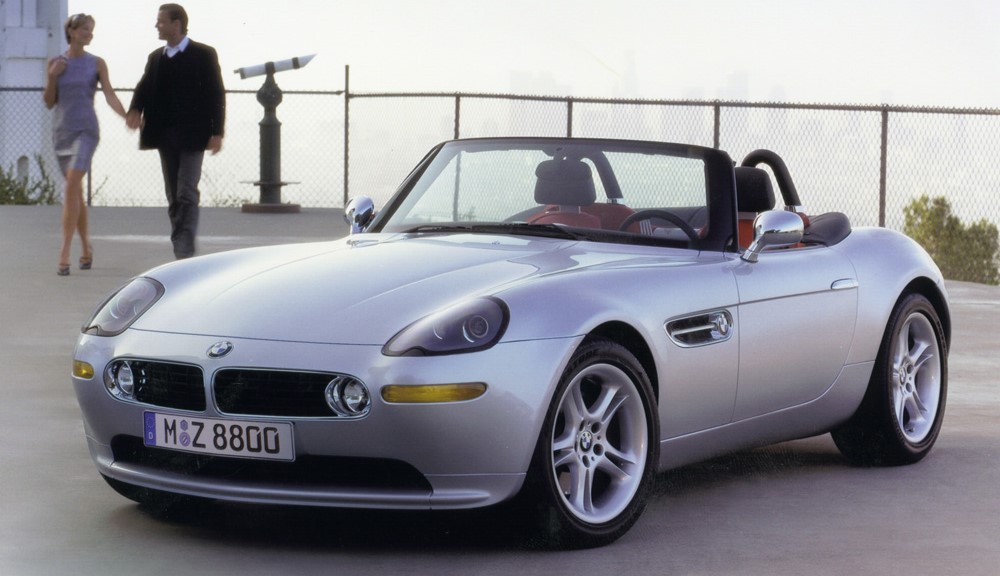
BMW Z8 (1999-2003)
BMW started development work in the mid-1990s on a superlative roadster concept for the new millennium. The Z07 design study was first seen by the public in 1997, and series production began in 1999, the car having already starred in a James Bond film as 007’s chosen form of transport. The styling of the Z8, which was supplied with a standard hardtop, contained echoes of an earlier classic beauty, the 507, but under its aluminum outer skin was an array of ultra-modern technology, including an aluminum space frame and the high-performance engine from the M5.
General Data
Model Year……………………………1999 – 2003
No. of Units…………………………..5,703
Price……………………………………DM 235,000
Technical Data
Type of Engine……………………….Eight-cylinder V-engine
capacity in ccm……………………..4941
Power Output…………………………294 kW/400 bhp at 6600 rpm
Max.Speed…………………………….250 km/h
Dimensions…………………………….4400x1830x1317
Empty Weight (kg)…………………..1585
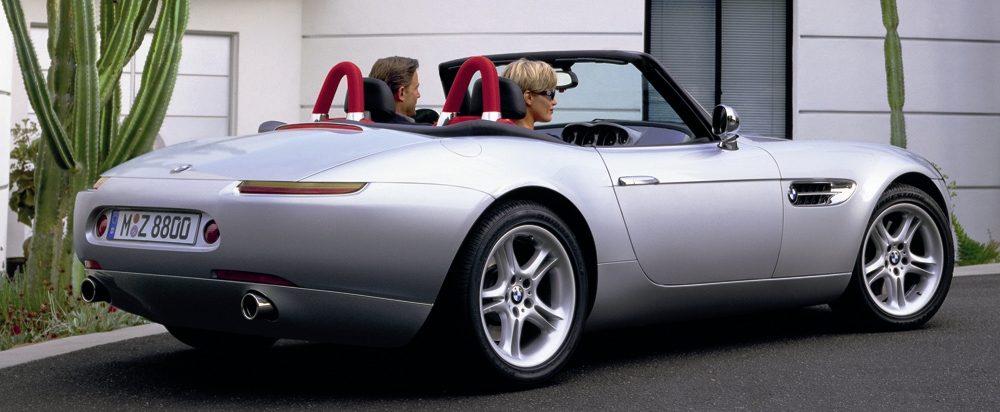
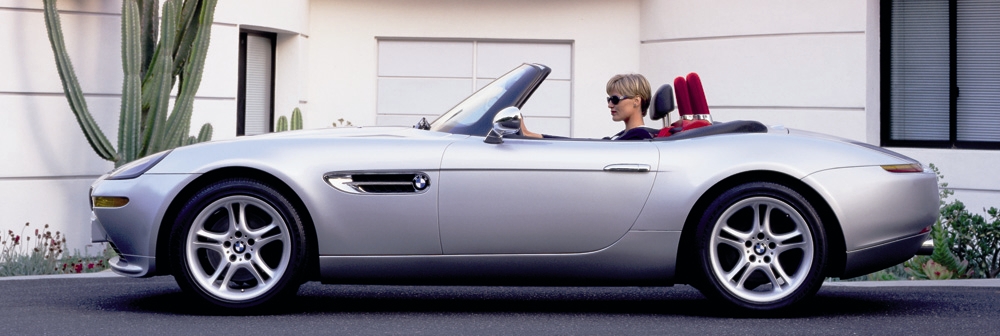
BMW Z8: THE NEW CENTURY BEGINS WITH A POWERFUL AND SENSUOUS EXPRESSION OF BMW’S PASSION
(2000) – Throughout its history, BMW has designed and produced limited-production automobiles that are quintessential expressions of the passion for driving that is the company’s soul. The legendary 328 roadster made its 1937 debut as a race car at Germany’s famous Nurburgring. Renowned designer Count Albrecht Goertz’s 507 roadster, introduced in 1955, is considered by many enthusiasts and collectors to be one of the most beautiful cars ever built. A sensation on the road and on the race track, the mid-engine M1 coupe, built from 1980-1982, redefined the term “exotic car.” In 1987, prompted by an enthusiastic public response to spy photos of a car built as an engineering concept project, BMW unveiled the Z1 roadster.
The Z8 roadster, introduced at the 1999 Frankfurt Auto Show, is a continuation of this tradition but in a new, compelling format. When developing the Z8, BMW designers were challenged to imagine what the original 507 would be like if it had never ceased production and had evolved over four decades. The result of this creative direction is a thoroughly contemporary interpretation of that famous roadster, a car that is truly a perfect blend of performance and sensuality; of modern technology and classic elegance.
Z8 DESIGN: TAKING CUES FROM THE PAST, SETTING TRENDS FOR THE FUTURE
The world’s first look at the Z8 concept was the Z07 design study displayed at the 1997 Tokyo Auto Show and shortly thereafter at the1998 North American International Auto Show in Detroit. Based on favorable public reaction, BMW decided to build the Z8 in limited numbers.
BMW 507 designer Count Albrecht Goertz paid the Z8 the ultimate complement, saying, “If I were to design the 507 today, it would look like the Z8.” Vastly different than current exclusive high-performance car styling trends, the front-engine, rear-wheel drive sports car features a long hood, tapered overhangs, a cockpit positioned toward the rear and a low beltline. The front fender air intake grilles, in this case with integrated turn signal lights, are a design element usually associated with the classic 507, although the concept dates from earlier BMWs. In a world of sharp-edged, angular sports cars, the Z8 is romantically curvaceous.
“All these features from the bible of sports car design, though entirely reinterpreted, contribute to the appearance of the Z8,” said Chris Bangle, head of BMW design. “And of course, the wide, squat kidney grille in the front was first seen on the 507. It gives the new sports car that distinctive look that says, ‘This is a BMW – the legend lives on!’ “Just looking at those beautiful, classic lines, I get the feeling of romantic passion,” said Bangle. “This body, built in BMW’s high-end technology using the most sophisticated aluminum spaceframe, represents the ultimate standard of fascinating motoring: A classic roadster – and the Z8 is indeed a classic roadster in every respect – simply has to have a long engine bay, body lines swinging down at the sides from door level, a sexy ‘derriere’ and big wheels.”
Yet the Z8 is unmistakably modern. The long, flowing hood allows the engine to sit well back in the chassis making the Z8 a front/mid-engine design. Aluminum construction is used extensively throughout including the spaceframe – an industry first, suspension and all body panels with the exception of bumpers (made of impact-resistant polyurethane) and steel door hinges. Other contemporary details include 18-inch alloy wheels and low-profile, run-flat tires.
The roadster’s advanced lighting technology includes dynamically adjustable Xenon headlamps with high-pressure washers concealed in the leading edges of the headlamp covers. The Z8 is the first car ever with neon turn signals and brake lights that illuminate ten times faster than conventional bulbs, giving other drivers more time to react.
Another example of the attention to detail the Z8’s designers lavished on the new roadster is the two round, red lights on either side of the rear license plate. The left light is a rear fog lamp, marking the first time BMW has sold a car with such a safety device as standard equipment in the U.S. market. The right light is the back-up light that, despite its red lens, illuminates in white when the driver selects reverse gear.
Building the Z8 is as unique a process as is the car itself. Z8 bodies are constructed and painted at BMW’s Dingolfing plant, approximately 60 miles northeast of Munich; the front and rear bumpers are manufactured at the nearby Landshut facility. Completed bodies are then shipped to the former pilot plant area of the company’s Milbertshofen factory in Munich, where the limited production Z1 was built, for final assembly. For 2000, a small team of highly skilled craftsmen will largely hand-build approximately 400 cars for the U.S. market in 31 assembly steps. The complete assembly and finishing period for a Z8 is about 10 times longer than that for a 3 Series sedan.
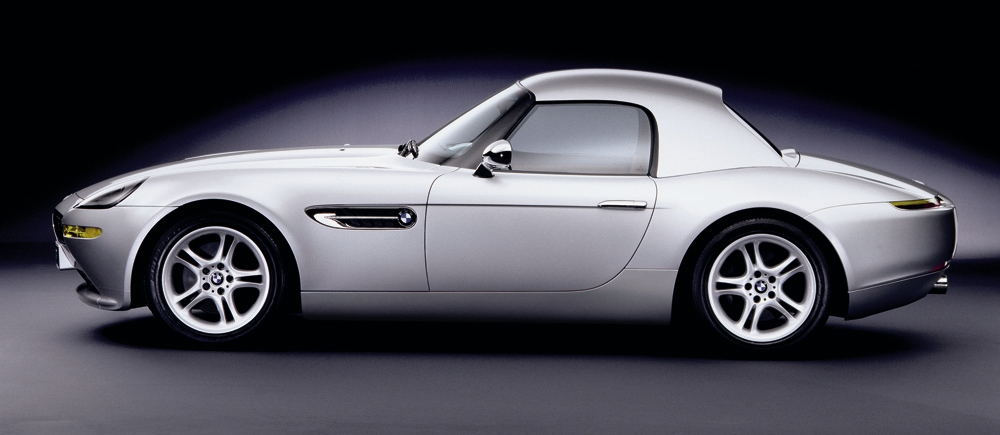
Supreme Performance and Exceptional Technical Features Make the New BMW Z8 a Unique Car in Its Own Market
(1999) – An almost endlessly long hood, large wheels, air scoops on the side – looking at the beautiful body of the Z8, BMW’s new open sports car, will immediately evoke the glory days of classic roadsters. You will harken back to the legendary BMW 507 of the ’50s, one of the most beautiful cars ever built. Designed by one of the star stylists of his day, Albrecht Graf Goertz, this genuine classic saw an exclusive production run of only 252 units.
Like the 507 that inspired it, the Z8 will be produced in tantalizingly small numbers. Indeed, an automotive dream of this caliber is what happens when a team of passionate and enthusiastic designers and engineers join up to create an exceptional automobile. Here they were given free rein to build a truly emotional two seater, a car created for driving pleasure and evoking immediate passion.
The result is a sports car of alluring charm: muscular yet smooth, stylish and unique, and with all the stuff that myths are made of.
In its basic design the BMW Z8 is characterized by classic roadster features borne out by the long front fenders, short overhangs and the snug but comfortable cockpit. The softly flowing lines of the wheel arches extend through the wide doors to the short and powerful-looking rear end. And the air scoops between the front wheel arches and the doors are a long standing BMW tradition.
The Z8 is a typical BMW from the front of course: Its wide kidney grille and compact round xenon headlights beneath glass covers underline the traditional, typical features of the marque. The view road users will most often see and remember is the equally impressive rear end with body lines extending slightly downwards, the diffuser and two tailpipes made of polished steel. A hardtop for the less sunny days of the year, incidentally, comes standard.
Inside, the BMW Z8 offers the perfect synthesis of sporting performance and luxurious style, boasting features not to be taken for granted even in this supreme segment.

The Most Critical Element: Aluminum
Developing the “backbone” of the new Z8, BMW’s engineers have opted for a new technology, an aluminum spaceframe with structural panels. The outer skin of this elegant sports car, therefore, is made largely of aluminum. The bumpers and the inner flanks at the rear are made of polyurethane serving to softly cushion minor bumps and impacts against the body. These elaborate materials ensure maximum chassis stiffness, optimum behavior in a crash and superior smoothness, reducing vibrations to a minimum.
It almost goes without saying that high technology at its very best continues beneath the skin of the BMW Z8. So it is no surprise that this top-of-the-line sports car, built in limited numbers in Munich comes with the thrilling performance of the V8 engine from BMW’s new M5.
Displacing five liters, this power unit created right from the start for two different vehicle concepts develops maximum horsepower of 400 bhp at 6600 rpm and maximum torque of 369 lb-ft, ensuring more than ample power at all engine speeds.
Variable camshaft timing for intake and exhaust (double-VANOS) already seen in other BMW’s models as well as electronically controlled individual throttle butterflies help to boost torque at lower and mid-range rpm while providing optimum combustion. Another by-product of this technological tour de force is reduced exhaust emissions. In the interest of supreme traction in all situations, the engine itself is positioned behind the front axle.
Power of this caliber put to the road effectively and safely via a six-speed manual gearbox leading to the rear wheels, plus Dynamic Stability Control (DSC) for optimum traction, gives the BMW Z8 truly outstanding performance. Acceleration to 60 mph, for example, takes less than five seconds. Thanks to the outstanding flexibility of the engine, the process of overtaking other vehicles is equally fast and efficient, regardless of the gear used. The Z8 literally storms up to its electronically limited top speed of 155 mph.
“Negative” acceleration, as engineers call the process of braking, is equally impressive. A Z8 traveling at 60 mph requires less than 2.5 seconds to come to a standstill.
Moving on to the chassis and suspension, you will find that aluminum is the major material here, too, the front axle being an all-new spring strut configuration with precise rack-and-pinion steering, the rear axle an integral design ensuring optimum handling of transverse and longitudinal forces. Light-alloy wheels in a new, unique design exclusive to the Z8 are a further sign of distinction for this very special car. And finally, superior road contact is ensured by high-performance tires with fail-safe running characteristics measuring 245/45 R 18 W at the front and 275/40 R 18 W at the rear.
Introducing an all-new concept, the new BMW Z8 is proudly entering the league of world-famous sports cars. Built in small numbers in a truly exclusive series and presented to the public for the first time at the Frankfurt Motor Show in September 1999, the Z8 is a purebred driving machine for the genuine connoisseur, a car that turns dreams into reality.
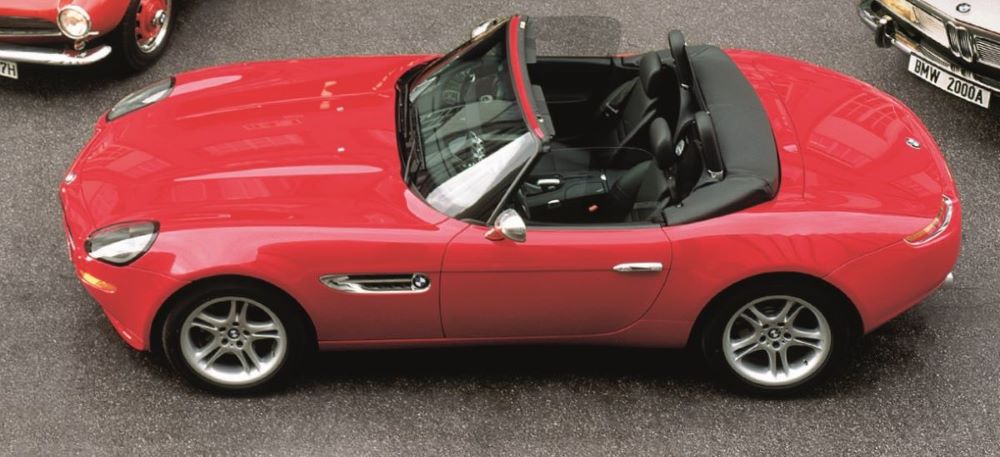
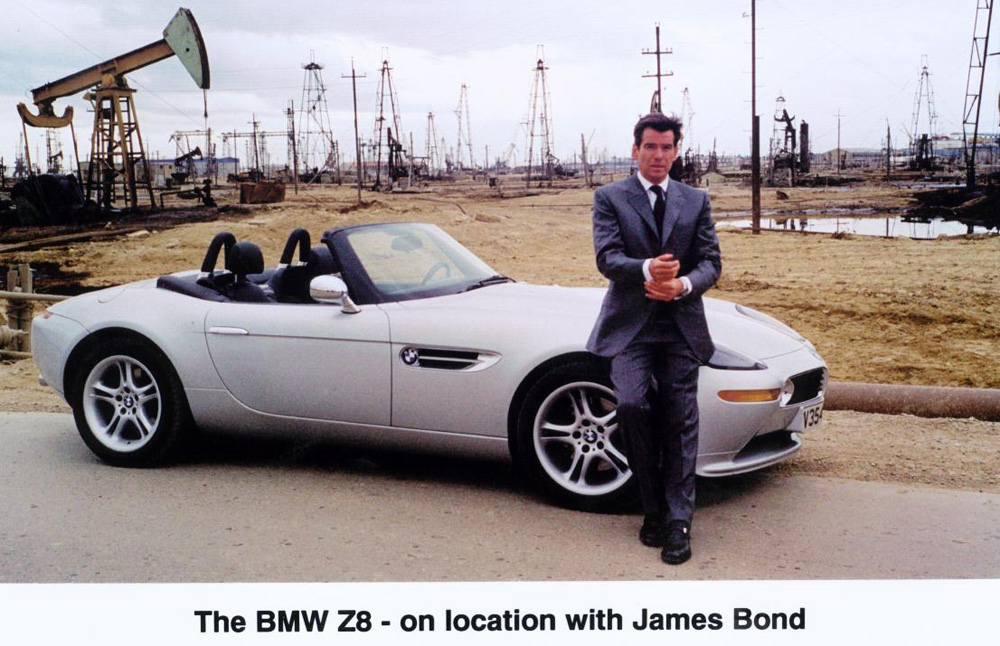
JAMES BOND TO DRIVE BMW Z8 IN THE WORLD IS NOT ENOUGH
The film world’s most successful secret agent, Bond, James Bond, will be driving the stunning new BMW Z8 in The World Is Not Enough, scheduled for release in November 1999. This thoroughbred BMW super sports car is as elegant and smooth as Agent 007 and with a six-speed transmission, and 400-horsepower V-8 engine, it outraces the bad guys with thrilling speed.
Inspired by the legendary BMW 507, the Z8, also a two-seat open sports car, is truly the ultimate driving machine. The long, sleek engine compartment and streamlined body design lead to a powerful, muscular rear end. The Z8 will go on sale in early 2000.

Specifications and Features
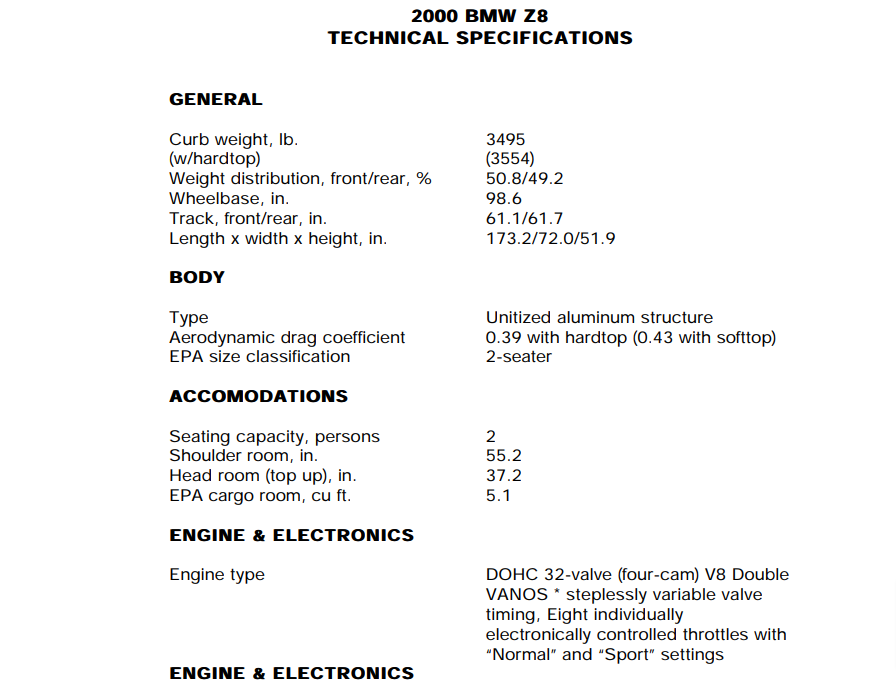
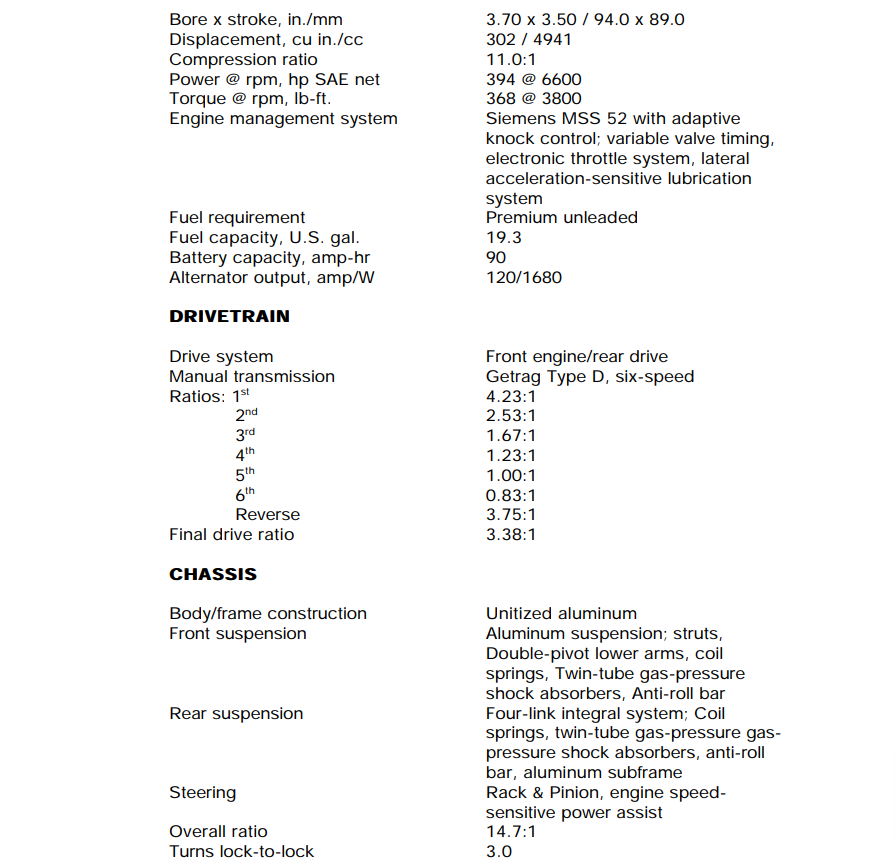

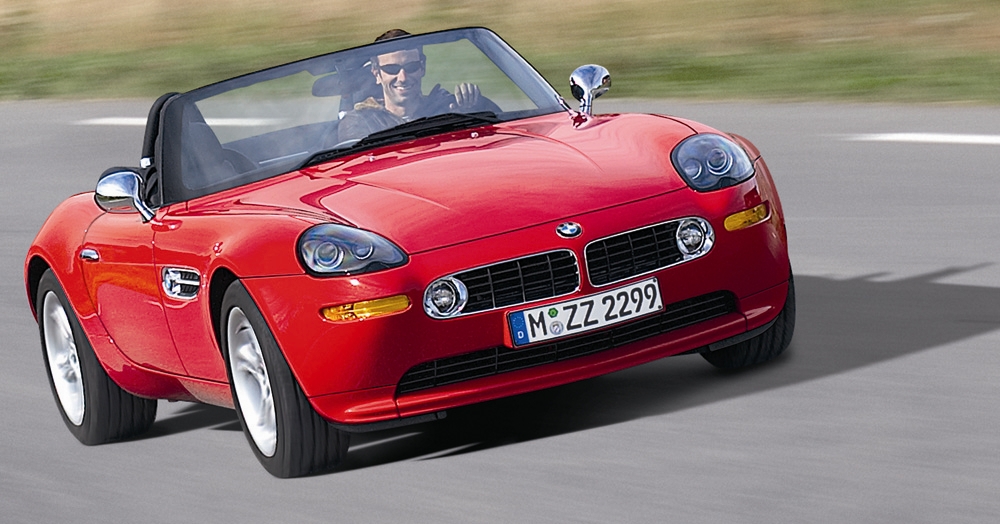

You must be logged in to post a comment.